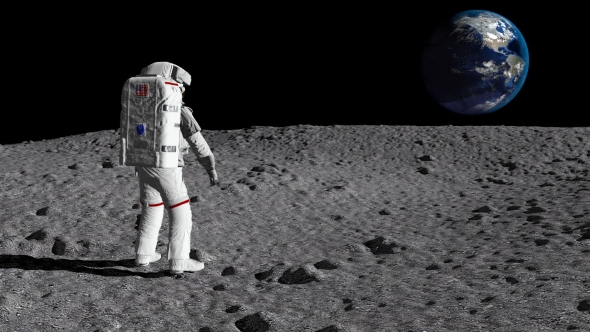Since 1930, when Luther Replogle began making paper globes, people have seen the Earth as a “dead” picture glued to a ball and mounted on a stand, or a flat map hanging lifelessly on a wall. And when you view the Earth that way for very long, it’s bound to influence what you think about the Earth and how you treat it.
Then on Christmas Eve, 1968, Apollo 8 astronaut William Anders took the first color photograph of Earth from space. The image—a sun-lit Earth appearing above the barren lunar horizon—is called Earthrise, and it quickly circulated around the world igniting a global environmental movement. Nature photographer Galen Rowell described Earthrise as “the most influential environmental photograph ever taken.”

Why was this one photograph so special? Because it was the very first time Humanity saw the Earth floating against the blackness of space. Never before had humans been far enough away from Earth to see the whole planet, and this two-dimensional photograph was enough to create a powerful effect in virtually everyone who saw it.

Earthrise was soon followed by numerous Apollo and International Space Station astronauts coming back from space having experienced “a deep cognitive and emotional shift accompanied by unexpected and even overwhelming emotions” when they looked at a three-dimensional Earth from space. Seeing Earth as a whole—free of national boundaries, surrounded by the vastness of space—fundamentally changed the way astronauts thought about humanity, the environment, and their place in the universe.
Apollo 14 astronaut Edgar Mitchell put it thsi way: “From out there on the moon… you develop an instant global consciousness, a people orientation, an intense dissatisfaction with the state of the world, and a compulsion to do something about it.”
More recently, 90-year-old William Shatner (aka Star Trek’s Captain Kirk”) returned from his 11minute Blue Origin rocket trip into space saying, “I’m so filled with emotion about what just happened. It’s extraordinary. Everybody in this world needs to do this.”

Unfortunately, we can’t send all of humanity into space to see the Earth as she wants to be seen. But, if we can’t bring Humanity into space, we CAN bring the whole Earth to Humanity by placing Living Globes on coffee tables and desks in homes and schools and libraries all over the world.

So, Goodbye outdated paper and plastic globes. Hello, next-generation digital spheres that display real-time satellite images of our living planet in private homes, classrooms, and public spaces. The Living Globes Society is a non-profit company created to let everyone, everywhere, see the Earth in real-time and three dimensions—as the astronauts did from the moon.
Please help us achieve our purpose by giving us your thoughts here.
